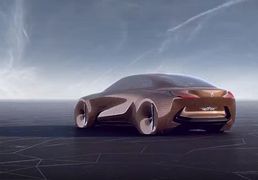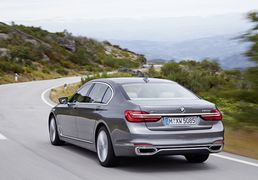THE Honda Civic is back, I kept musing to myself while at the helm of the sleek-looking, 10th generation of the model at its launch in the Western Cape.
The Civic nameplate is one of the company’s longest serving and most successful with more than 23-million units sold globally since its inception in 1973. SA’s taste of the model, however, came in 1983 when the then second generation, billed here as the Ballade, made its debut and quickly carved its way on to buyers’ shopping lists.
Many iterations of the model followed, but, for many young buyers, it was the sixth generation that truly placed the nameplate on a higher pedestal. It became a desirable alternative to the Golf GTI and VR6 of the 1990s, particularly in high-performance VTec guise, which proved a worthy performer with its 118kW, normally aspirated 1.6l powerplant. I lusted after a ruby red VTec coupe during my high school days.
However, it was arguably the eighth generation that did well for the brand locally, clinching the SA Car of the Year title in 2007 in its sedan guise. The hatchback variant with its intergalactic design broke the mould in its segment and offered an excellent chassis, which later spawned the high-performance Type-R variant.
The ninth generation, which was essentially an extensive facelift of the preceding model, kept all the hallmarks that made its predecessor so popular.
The high-performance Type-R became the best handling front-wheel drive hot hatch available in this scribe’s books, eclipsing even the well-sorted Renault Megane RS Cup. That said, the 10th generation looks bold enough to bring the brand back to its heydays.
Featuring a wide, low-slung visage and stance, the new model measures 4,654mm (109mm longer that its predecessor) in overall length, which allows a wheelbase increased by 30mm, while the height has been lowered by 20mm. Rear knee room has swelled by 55mm, while boot space has grown by 20% to 430l in spite of there being a full-size spare wheel.
This presents a four-door coupe look that is not far removed from, say, a BMW 4 Series Gran Coupe, only sleeker on the part of the Honda.
It is built on the company’s new platform that has the extensive use of ultra-strength tensile steel, which has had an overall weight reduction of 22kg over the old car, all the while increasing structural rigidity. The interior is also a marked improvement over its predecessor with exemplary tactile materials, while a digital instrument cluster dispenses with the two-tier setup of the previous model.
Two engine variants and four specifications (Comfort and Elegance for the 1.8l, Sport and Executive for 1.5l VTec turbo) levels are on offer. The former has the 1.8l i-VTec petrol engine from the previous model, which is good for 104kW and 174Nm. It is said to consume 6.3l/100km.
Then there is the new 1.5 VTec turbo engine mustering 127kW and 220Nm, the latter available between 1,700 to 5,500r/min and claimed to sip fuel at 5.9l/100km.
Top speed for both models is 200km/h and both utilise a CVT (continuously variable transmission) gearbox. Granted, CVT gearboxes are not the best of self-shifting ilk, but the maker has masked the drone of these transmissions, although it is still vocal under full-bore acceleration.
At launch we managed to drive the turbo variants, which proved peppy in power delivery and well set up in the manner in which they rode over bumps and went around corners.
Thanks to the McPherson front and multilink rear suspension, the ride quality is decidedly stable, even over usually bone-jarring, denture-loosening scarred bitumen. Handling is fairly decent for a family gobbling sedan express and it feels like a great base for the next generation Type-R variant, which is expected to be unveiled in concept garb at the Paris Motor Show in September.
There is a gizmo called AHA (Agile Handling Assist) that uses the braking system to help the vehicle to quell impending understeer under hard cornering, much like an electronic differential.
The Executive model comes with a suite of passive and safety equipment first seen in the flagship Accord. This includes Adaptive Cruise Control (ACC) with Low Speed Following (LSF), Collision Mitigation Braking System (CMBS), Lane Departure Warning (LDW), Lane Keeping Assist System (LKAS), Road Departure Mitigation (RDM), Forward Collision Warning (FCW) and Lane Watch with side cameras.
There is also a remote engine start option on the key fob, which allows you to remotely start the vehicle and it will automatically calibrate the climate control to suit the weather conditions.
According to Graeme Eagle, director of operations at Honda SA, with the new Civic, which is sourced from Thailand, the engineers wanted to again create a vehicle that is spacious and comfortable, yet a joy to drive. I have to say that brief has been met.
The new Civic breaks the mould of vehicles in this segment as it is bold, well kitted, and fun to drive thanks to the new turbo engine. Also, at R330,000 to R460,000 it manages to fill the gap just below the Accord which has not quite cut the mustard against its competitors.
Bringing a fresh perspective to the segment, the Honda Civic is indeed back — with a vengeance.
-
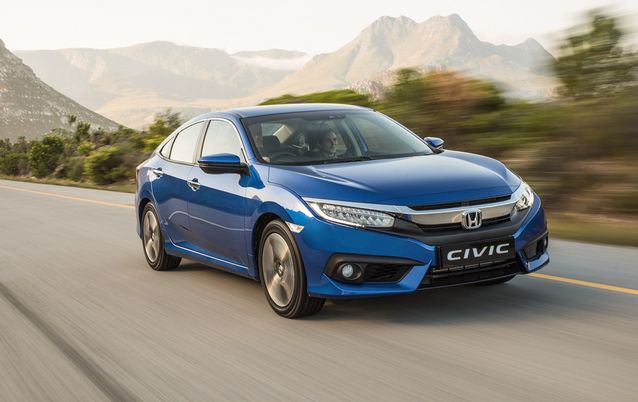
Honda has given its Civic a completely new look. Picture: QUICKPIC
-
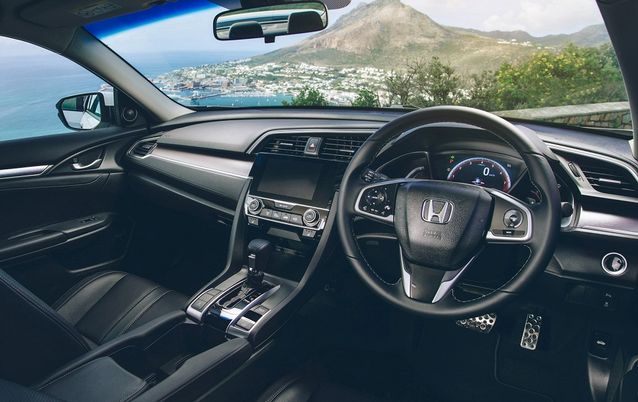
The interior has gone a little more mainstream but is well equipped and spacious. Picture: QUICKPIC
-
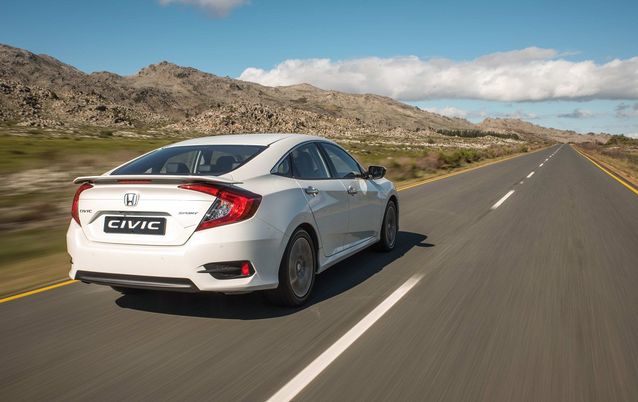
The Sport adds a new dynamic to the Civic range. Picture: QUICKPIC
-
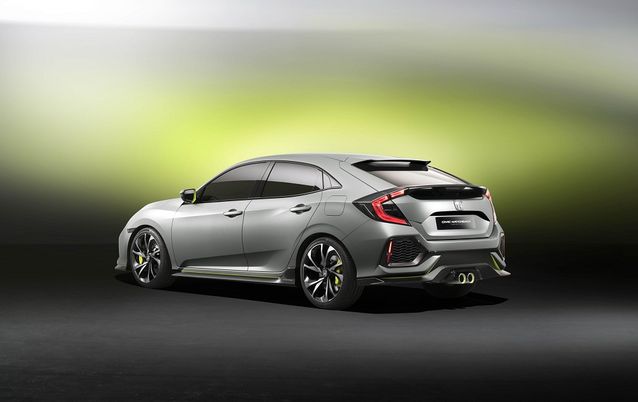
The hatchback is currently not planned for the SA market. Picture: NEWSPRESS UK
THE Honda Civic is back, I kept musing to myself while at the helm of the sleek-looking, 10th generation of the model at its launch in the Western Cape.
The Civic nameplate is one of the company’s longest serving and most successful with more than 23-million units sold globally since its inception in 1973. SA’s taste of the model, however, came in 1983 when the then second generation, billed here as the Ballade, made its debut and quickly carved its way on to buyers’ shopping lists.
Many iterations of the model followed, but, for many young buyers, it was the sixth generation that truly placed the nameplate on a higher pedestal. It became a desirable alternative to the Golf GTI and VR6 of the 1990s, particularly in high-performance VTec guise, which proved a worthy performer with its 118kW, normally aspirated 1.6l powerplant. I lusted after a ruby red VTec coupe during my high school days.
However, it was arguably the eighth generation that did well for the brand locally, clinching the SA Car of the Year title in 2007 in its sedan guise. The hatchback variant with its intergalactic design broke the mould in its segment and offered an excellent chassis, which later spawned the high-performance Type-R variant.
The ninth generation, which was essentially an extensive facelift of the preceding model, kept all the hallmarks that made its predecessor so popular.
The high-performance Type-R became the best handling front-wheel drive hot hatch available in this scribe’s books, eclipsing even the well-sorted Renault Megane RS Cup. That said, the 10th generation looks bold enough to bring the brand back to its heydays.
Featuring a wide, low-slung visage and stance, the new model measures 4,654mm (109mm longer that its predecessor) in overall length, which allows a wheelbase increased by 30mm, while the height has been lowered by 20mm. Rear knee room has swelled by 55mm, while boot space has grown by 20% to 430l in spite of there being a full-size spare wheel.
This presents a four-door coupe look that is not far removed from, say, a BMW 4 Series Gran Coupe, only sleeker on the part of the Honda.
It is built on the company’s new platform that has the extensive use of ultra-strength tensile steel, which has had an overall weight reduction of 22kg over the old car, all the while increasing structural rigidity. The interior is also a marked improvement over its predecessor with exemplary tactile materials, while a digital instrument cluster dispenses with the two-tier setup of the previous model.
Two engine variants and four specifications (Comfort and Elegance for the 1.8l, Sport and Executive for 1.5l VTec turbo) levels are on offer. The former has the 1.8l i-VTec petrol engine from the previous model, which is good for 104kW and 174Nm. It is said to consume 6.3l/100km.
Then there is the new 1.5 VTec turbo engine mustering 127kW and 220Nm, the latter available between 1,700 to 5,500r/min and claimed to sip fuel at 5.9l/100km.
Top speed for both models is 200km/h and both utilise a CVT (continuously variable transmission) gearbox. Granted, CVT gearboxes are not the best of self-shifting ilk, but the maker has masked the drone of these transmissions, although it is still vocal under full-bore acceleration.
At launch we managed to drive the turbo variants, which proved peppy in power delivery and well set up in the manner in which they rode over bumps and went around corners.
Thanks to the McPherson front and multilink rear suspension, the ride quality is decidedly stable, even over usually bone-jarring, denture-loosening scarred bitumen. Handling is fairly decent for a family gobbling sedan express and it feels like a great base for the next generation Type-R variant, which is expected to be unveiled in concept garb at the Paris Motor Show in September.
There is a gizmo called AHA (Agile Handling Assist) that uses the braking system to help the vehicle to quell impending understeer under hard cornering, much like an electronic differential.
The Executive model comes with a suite of passive and safety equipment first seen in the flagship Accord. This includes Adaptive Cruise Control (ACC) with Low Speed Following (LSF), Collision Mitigation Braking System (CMBS), Lane Departure Warning (LDW), Lane Keeping Assist System (LKAS), Road Departure Mitigation (RDM), Forward Collision Warning (FCW) and Lane Watch with side cameras.
There is also a remote engine start option on the key fob, which allows you to remotely start the vehicle and it will automatically calibrate the climate control to suit the weather conditions.
According to Graeme Eagle, director of operations at Honda SA, with the new Civic, which is sourced from Thailand, the engineers wanted to again create a vehicle that is spacious and comfortable, yet a joy to drive. I have to say that brief has been met.
The new Civic breaks the mould of vehicles in this segment as it is bold, well kitted, and fun to drive thanks to the new turbo engine. Also, at R330,000 to R460,000 it manages to fill the gap just below the Accord which has not quite cut the mustard against its competitors.
Bringing a fresh perspective to the segment, the Honda Civic is indeed back — with a vengeance.























